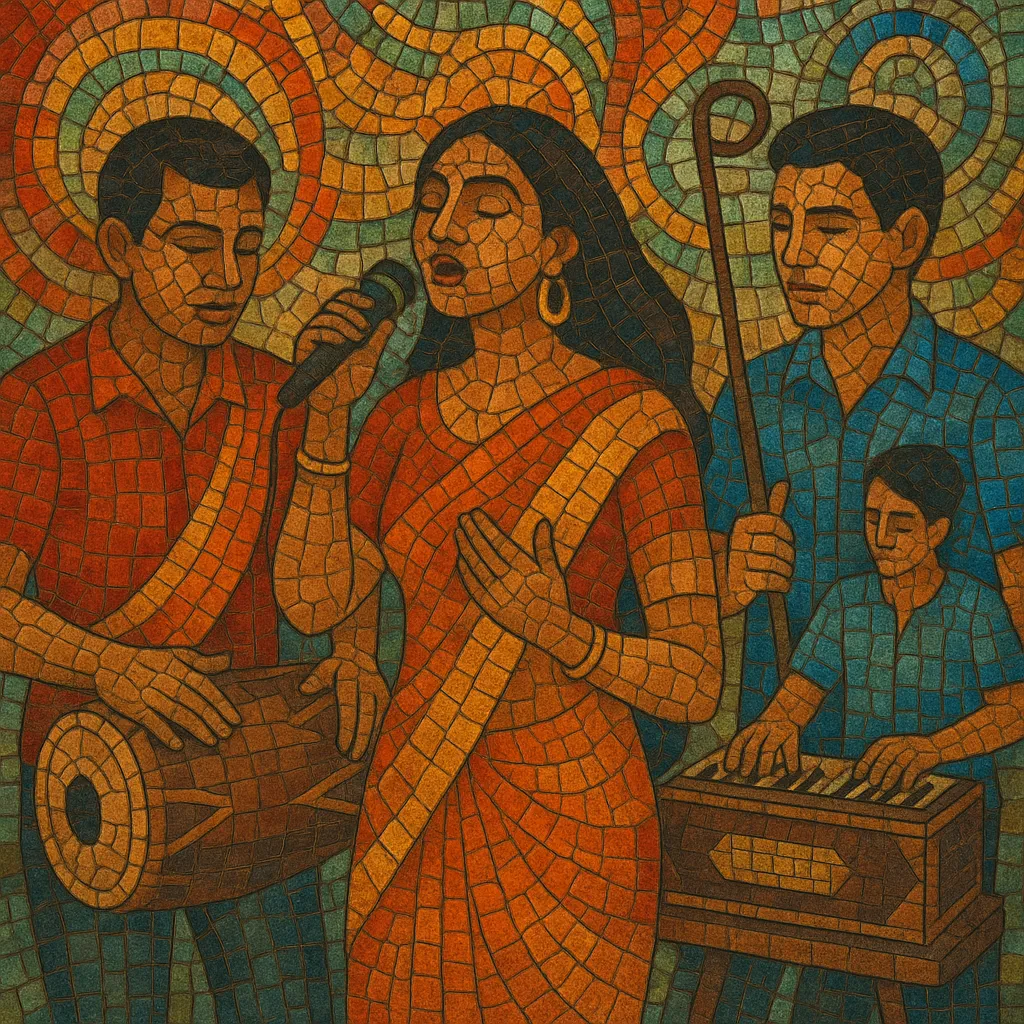Chutney is an Indo-Caribbean dance music that blends North Indian folk and devotional song with Caribbean popular rhythms. It features lively percussion (especially dholak, dhantal, and tassa), harmonium-led melodies, and singable choruses in Hindi, Trinidadian Hindustani, and English.
Emerging among the Indian diaspora in Trinidad and Tobago, chutney grew from intimate house-music traditions into amplified stage performances and recordings. Its lyrics typically revolve around love, weddings, teasing banter, and festive “bacchanal,” and its upbeat feel makes it a staple at family functions, fetes, and Carnival events.
While classic chutney retains a rootsy Indo-folk core, modern productions often incorporate calypso and soca grooves, electric bass, guitar skanks, and synthesizers. This evolution helped give rise to the high-energy fusion subgenre chutney soca.
Chutney’s roots trace to Indian indentured laborers from North India (especially Bhojpuri-speaking regions) who arrived in Trinidad (and wider Guyana/Suriname) between 1838 and 1917. In domestic settings, Indo-Caribbean communities cultivated baithak gana (parlor music), bhajans (devotional songs), wedding songs, and folk dance tunes accompanied by harmonium, dholak, dhantal, and call-and-response singing.
By the 1960s, amplified performances and the recording industry began shaping these traditions into a recognizable popular style. Sundar Popo’s early hits in the 1970s (notably “Nani and Nani”) are widely credited with popularizing chutney beyond private gatherings, introducing a catchy, verse–chorus format while keeping Indo-folk instrumentation and melodic turns.
In the 1980s, chutney artists shared stages with calypso and the emerging soca movement, while tassa drum ensembles intensified the dance feel. Drupatee Ramgoonai’s trailblazing recordings (e.g., “Roll Up De Tassa,” 1988) helped propel a fusion current that soon crystallized as chutney soca. The Chutney Soca Monarch competition (launched in the 1990s) further legitimated the style on Carnival’s biggest platforms. Diaspora hubs in New York, Toronto, and London expanded the audience and professional circuit.
Modern chutney keeps its Indo-folk heart but embraces club-ready production: punchy soca backbeats, electric bass, synths, and polished hooks. Artists release bilingual songs, collaborate with soca and dancehall acts, and draw on filmi pop. While debates about lyrical themes (e.g., rum songs) and performance conventions persist, chutney remains a vital expression of Indo-Caribbean identity and celebration, continually renewing itself through new voices, media, and festival culture.
Use harmonium for lead motifs and drones, dholak for rolling 8-beat (keharwa) patterns, dhantal for a bright metallic time-keeping click, and tassa for driving, celebratory drum breaks. Modern bands add electric bass (syncopated but supportive), guitar skanks on off-beats, keyboards for pads and countermelodies, and light percussion (shaker, tambourine) to lift the groove.
Classic chutney sits in 4/4 with a buoyant, danceable pulse at roughly 95–120 BPM, while chutney soca pushes faster (130–160 BPM). Anchor the rhythm in keharwa- or kaharva-style dholak thekas, layer a calypso/soca backbeat on drum set, and feature tassa flourishes for fills, call-and-response breaks, and climactic endings.
Compose singable, pentatonic or major/mixolydian-leaning melodies that allow for light gamak (ornamentation) and call-and-response phrases. Keep harmony straightforward—diatonic I–IV–V (or i–VII–VI in minor) progressions suffice—and spotlight the harmonium doubling or answering the vocal line. Short melodic refrains that loop easily are ideal for audience participation.
Write lyrics in Hindi/Trinidadian Hindustani, English, or a mix. Themes often revolve around weddings, flirtation, playful teasing, familial humor, and festive drinking culture. Keep lines concise, rhythmic, and colloquial, with catchy rhymes that suit repeated choruses.
Structure songs in a verse–pre-chorus–chorus format, inserting tassa breaks before final choruses for maximum crowd response. Use backing vocals for “response” lines, handclaps on 2 and 4, and dynamic rises into hooks. Live, encourage call-and-response with the audience and incorporate short dance sections to highlight tassa and dholak.
Prioritize clear, bright percussion in the mix; give harmonium and lead vocal a forward presence; and sidechain kick/bass lightly for dance impact. Layer subtle synth pads to thicken choruses without obscuring the acoustic core.


